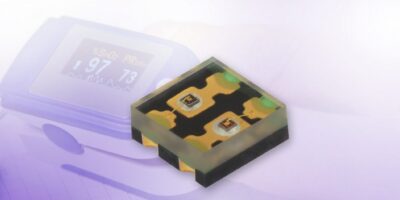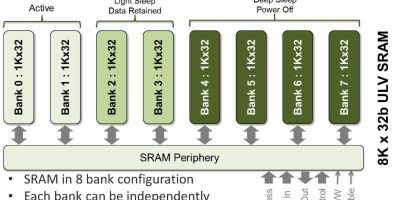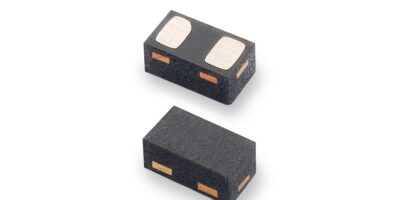To save space in wearable devices and medical patient monitoring systems, a dual-colour red and IR emitting diode is designed to save space. Vishay Semiconductors offers the diode in a compact 2.0 x 2.0 x 0.87mm package.
Wearable
MOSFET speed charging for portable devices
Eight 60V MOSFETs are designed for synchronous rectification in flyback converters, used in quick chargers for portable devices, such as smartphones. The AlphaSGT series from Alpha and Omega Semiconductor is made up of AO4262E, AO4264E, AO4268, AON6262E, AON6264E, AON6268, AON7262E and AON7264E.
Memory compiler saves power for IoT
A 40nmULP memory compiler facilitates use of sureCore’s 40nm low voltage SRAM IP that effectively operates at a record-setting 0.6V across process voltage and temperature.
TVS diode arrays protect smart watches and medical devices
Bidirectional discrete TVS diode arrays in the SP1026 series are designed specifically to protect sensitive electronic equipment from damage due to electrostatic discharges (ESD). Littelfuse uses Zener diodes fabricated using a proprietary silicon avalanche technology to protect each I/O pin to provide a high level of protection against ESD. The robust, general-purpose diodes can absorb repetitive ESD strikes at ±30kV (contact discharge, IEC 61000-4-2) without performance degradation, says the company. Each diode can dissipate 5A of 8 or 20micro sec surge current (IEC61000-4-5) with very low clamping voltages.
About Weartech
This news story is brought to you by weartechdesign.com, the specialist site dedicated to delivering information about what’s new in the wearable electronics industry, with daily news updates, new products and industry news. To stay up-to-date, register to receive our weekly newsletters and keep yourself informed on the latest technology news and new products from around the globe. Simply click this link to register here: weartechdesign.com







